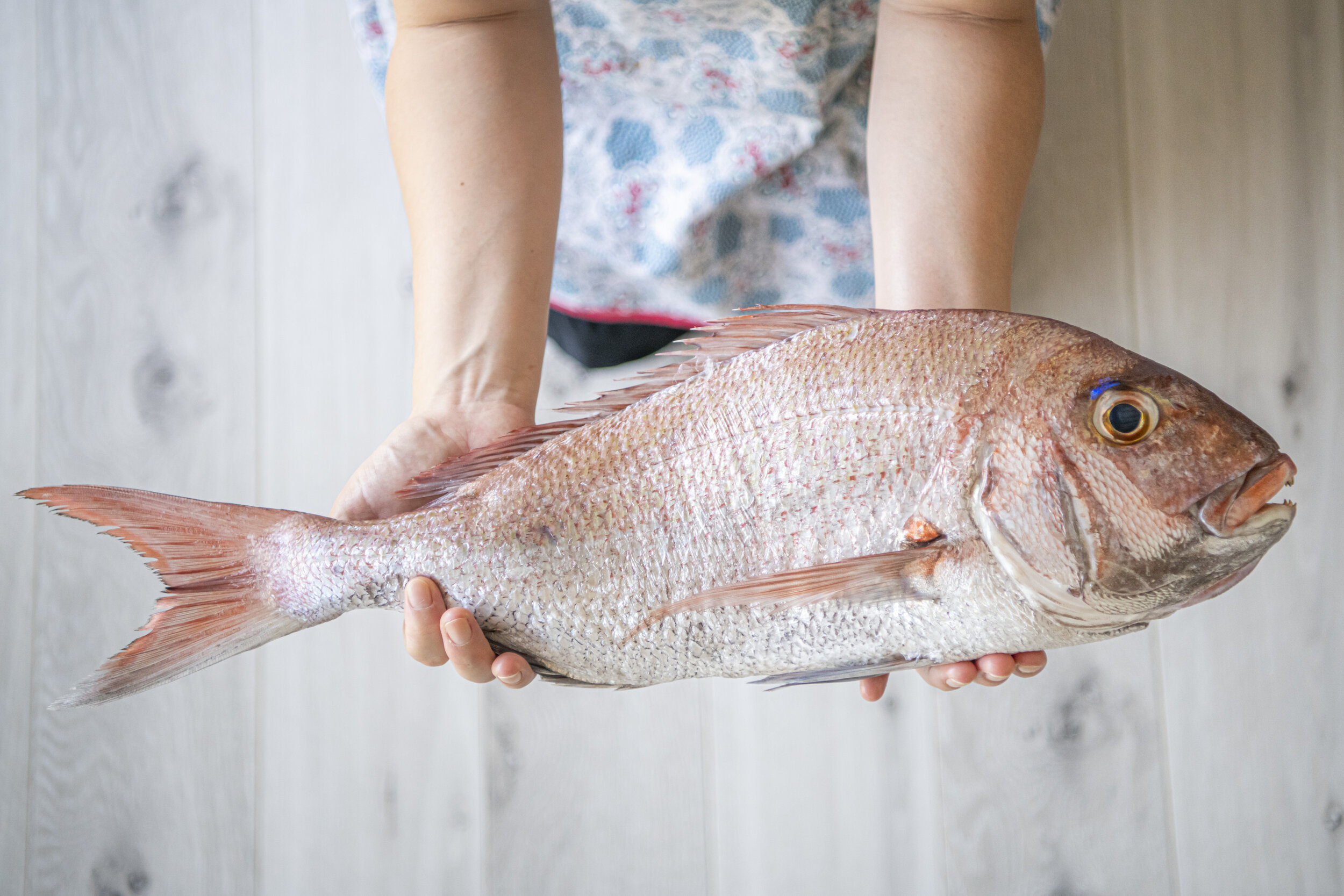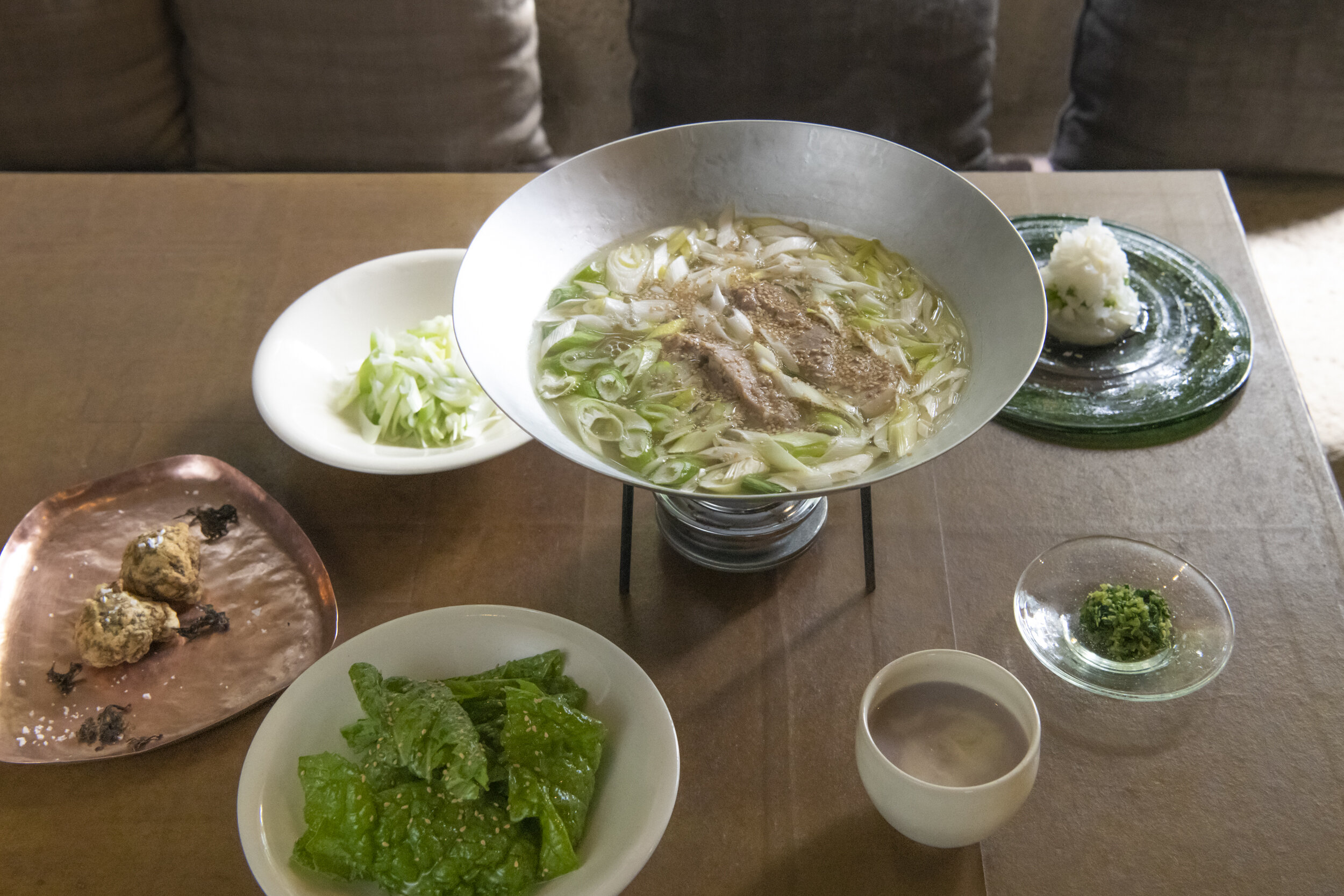
Setouchi Cooking
Cooking & Eating In Harmony With Nature
Setouchi cooking is a highly naturalistic style of cooking. It’s the culinary equivalent of Japanese gardens. The beauty of Japanese gardens and one’s experience of them are of nature itself. But they are never entirely natural. Instead, they are perfected and idealized forms of nature, skillfully and subtly created by the gardener. In a similar manner, the Setouchi cook focuses on making the essential flavors of foods—their aromas, colors, tastes, and textures—be the best they can through simple cooking techniques and a subtle way of seasoning. Dishes, in turn, are composed to create a harmony of seasonal flavor. The Setouchi cook’s ultimate aim is not to conjure up memories or other associations for the eater, as it is for many cooks elsewhere in the world, but to simply present to the eater the fundamental deliciousness of nature and also the joy and satisfaction of being in harmony with nature during a meal.
If this sounds like Japanese cuisine in general, it’s because Setouchi cooking influenced the development of all Japanese cooking. Today Setouchi cooking is a distinct regional style, characterized by its focus on fresh, natural foods and its light, clean-tasting flavor. Japan’s other culinary traditions include the fermented food culture and game meats of its more mountainous, northern areas and the nearly equally rich-tasting style of cooking that developed in Japan’s coastal regions facing the open ocean due to their reliance on fatty, strong-tasting, deep-sea seafoods like tuna, mackerel, and yellowtail.
The base ingredients of Setouchi cooking are the mild-tasting, nearly fat-free coastal seafoods found in the Seto Inland Sea. The cornerstone of the cooking is sea bream, a firm, white-fleshed, coastal fish with barely an ounce of fat on it. Its taste is delicately sweet and suffused with a subtle yet powerful form of umami. The rest of the cooking is built around its flavor, including the use of lighter dashi stocks and seasonings than elsewhere in Japan and a minimal use of fats and oils.
There are many varieties of sea bream in the Seto Inland Sea, but the most prized is called Madai, which means True Sea Bream. It’s also often called Red Sea Bream because of its vivid pink color.
The predominant foods are vegetables, and Setouchi cooking was a vegetable-forward cuisine long before the introduction of Buddhism and its vegetarian precept in the 7th century in Japan, because nature consists mostly of plant life. This includes the many types of seaweeds growing in the Seto Inland Sea, which have more nutrients—protein, fiber, vitamins, and minerals—than land vegetables and also are calorie free.
But, despite the original, local origins of the Setouchi pantry, all foods are found in Setouchi dishes because everything in nature is considered delicious to eat. They, and also foreign types of dishes, are easily incorporated into Setouchi cooking through its versatile way of preparing foods.
The Setouchi pantry includes vegetables from around the world, many of which were first introduced to Japan in the Setouchi by foreign adventurers, traders, and emissaries over centuries.
Cooking methods are elemental—boiling, steaming, short simmers, most often blanching, which is practically an art in itself. Prepping techniques are as important as applications of heat. Salting, soaking, and cutting techniques, among others, are first steps taken to maximize a food’s unique flavor. Often, this kind of prepping is enough, and the food is served nearly as nature made it or used raw in a dish. But when cooking is required, these prepping techniques help ensure that it can be done quickly and evenly. Seasonings and sauces can be easily absorbed by the main ingredients. Foods cooked together will be done at the same time.
The sink has always been the biggest, most important appliance in the Setouchi kitchen because fresh water, and lots of it, is used to rinse, refresh, and soak fresh foods in a variety of pots simultaneously, as well as to pickle, blanch, steam, and boil foods and make dashi stocks.
Seasoning is done based on the primary essences of taste found in nature: sweetness, saltiness, bitterness, acidity, and umami, which is best described as the goodness of nature. It’s done subtly, with the aim to help foods taste more like themselves and to create a harmony of flavor in a dish. Aromatics and accents of flavor, such as herbs and spices, are few and added to highlight the main foods’ flavors through contrast or to complement rather than make strong statements of their own.
Often, the seasonings are other fresh foods, like sweet carrots, umami-rich tomatoes, pungent onions, mustardy mizuna greens, and peppery kaiware sprouts, or such natural seasonings as honey, sea salt, and citrus. Fermented seasonings, which are essential to all Japanese cooking because they help build layers of umami in a dish, are used less or are unique to the Setouchi, like usukuchi soy sauce, which is a lighter, more refined type than standard dark soy sauce. You won’t find miso used much, other than in miso soup or Setouchi adaptations of northern Japanese cooking styles. But you will see a copious use of sake, which essentially is lightly fermented water.
Variety is the spice of Setouchi meals. A variety of foods lightly seasoned and accented with aromatics and flavorings to create the sense of fullness and satisfaction found in nature.
Setouchi cooking is a simple, yet very creative art. There are no rules. Recipes are ideas and inspiration, rather than unique preparations, and are highly adaptable. The main ingredients can typically be mixed, matched, and substituted with whatever is in season in your garden and at your market. The seasonings, aromatics, and flavorings too can be varied to subtly skew flavor. For example, the type of sweetener used—a fruity pure white cane sugar, caramely brown sugar, or floral honey. They can also be varied according to your taste and style of cooking. Olive oil instead of the canola oil used in Setouchi kitchens. Or sumac as a flavoring instead of Japan’s unique lemon-peppery sansho.
Once the cook has presented their perfected and idealized flavors of nature in a dish to their guests, the eater is invited to participate in the cooking process by being offered an array of seasonings, sauces, and other condiments at the table to further season and flavor the dishes according to their own tastes, and in this way become fully engaged in the moment of appreciating and enjoying nature’s bounty. The one truly important rule of thumb in Setouchi cooking is that there should be some touch of green in each dish as a symbol that one is dining in harmony with nature.
